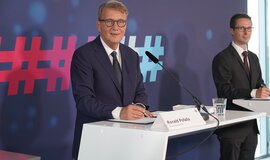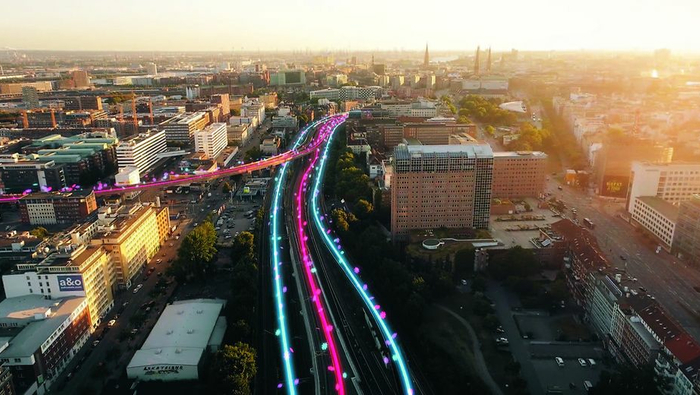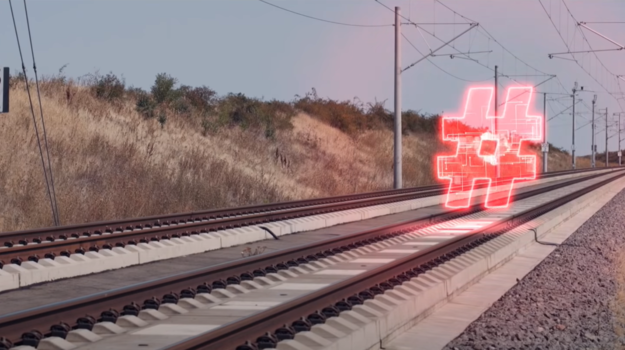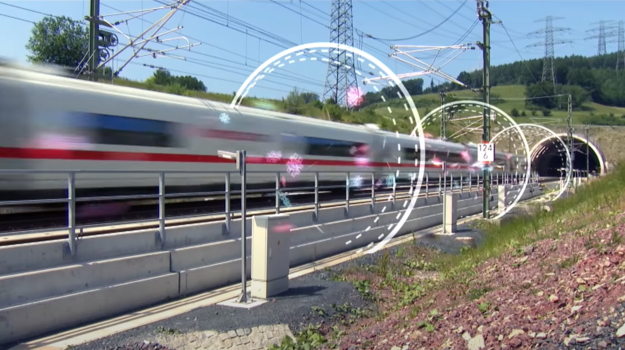
Digitalisation of the railways continues to pick up pace
A DB press release dated 02.09.2020
Rail passengers in Germany will be able to benefit even more quickly from the advantages of digital technologies on the railways. Already by the end of 2021, the conventional interlocking technology for railway operations in Germany is to be converted to digital technologies in ten regions, which will ensure significantly higher capacities and more quality in railway operations. The federal government is financing the introduction of the new interlockings with 500 million euros, thus enabling a speed boost in the digitisation of the railways.
With a "Memorandum of Understanding" in Berlin today, the partners Association of the Railway Industry in Germany (VDB), the Federal Railway Authority (EBA) and Deutsche Bahn agreed to jointly drive forward this conversion. Alongside the ongoing equipping of the network with the Europe-wide standardised train control system ETCS, the digital interlocking technology is the most important building block in the "Digital Rail Germany" programme for the future.
Enak Ferlemann, Parliamentary State Secretary to the Federal Minister of Transport and Digital Infrastructure and Federal Government Commissioner for Rail Transport: "The Federal Ministry of Transport and Digital Infrastructure is actively promoting digitisation in rail transport. The Federal Government has already been investing in the introduction of the standardised European control and safety technology ETCS since 2015. In line with our Rail Transport Master Plan, we now want to use 500 million euros from the economic stimulus package to give a strong impetus to the rail industry and make our network infrastructure more efficient. Standardised, open and upwardly compatible interfaces enable faster approval of the systems and broad participation of the railway technology companies in the implementation. In this way, we can decisively accelerate the digitalisation of our rail network. As the new systems are compatible with both existing and future interlocking technology from different suppliers, the climate-friendly railway will become the most future-proof means of transport of the 21st century."
Deutsche Bahn Infrastructure Director Ronald Pofalla: "We are pulling together in the German rail sector. The initiative takes us a huge step further in the jointly agreed modernisation of the railways - and thus towards more traffic on climate-friendly rail. With the pace we are now setting, we are setting new standards for technical developments in the rail sector. Here, political will, fast administration and spirited entrepreneurship go together."

Andre Rodenbeck, President of the German Railway Industry Association: "The Digitale Schiene Deutschland programme is a unique example of the digitalisation of a highly complex railway operation and will generate international appeal. The German industry is ready to jointly implement this unique reference now. The agreed acceleration of the project with the construction of state-of-the-art digital interlocking technology is an indispensable basis for this lighthouse project. Every further innovative step towards more advanced automation requires these facilities for a mobility revolution. We are taking cooperation between industry, authorities and the railways to a new level and creating an important reference for German innovative strength. The technology is there - we are ready to deliver. Everyone understands that investment is needed now."
Gerald Hörster, President of the Federal Railway Authority: "The railways must now start digitising the interlocking technology. This will significantly improve rail availability in particular. The Federal Railway Authority will support the railways and the railway industry within the scope of its possibilities. In this way, we are demonstrating the public administration's ability to act on this important issue and making a significant contribution to making the railways fit for the future."
In the "Memorandum of Understanding" it is agreed to achieve the complete digitalisation of interlocking technology nationwide already by 2035. The original planning assumed the year 2040. To this end, the railway industry, federal authority and Deutsche Bahn will accelerate processes for planning, approval and financing as well as the retrofitting of technology in the existing railway network on the basis of current law.
The digital technology will be used on regional lines in the Northern Palatinate, the Bavarian Forest and the Allgäu, among others.
The digital signal boxes (DSTW) stands for the latest generation of signal boxes. It is the technological successor to the electronic signal boxes. Instead of using extensive cable harnesses and electrical switching technology, the control commands to points, signals or level crossings are sent digitally via the DSTW using ring lines made of high-performance fibre optic cables.

